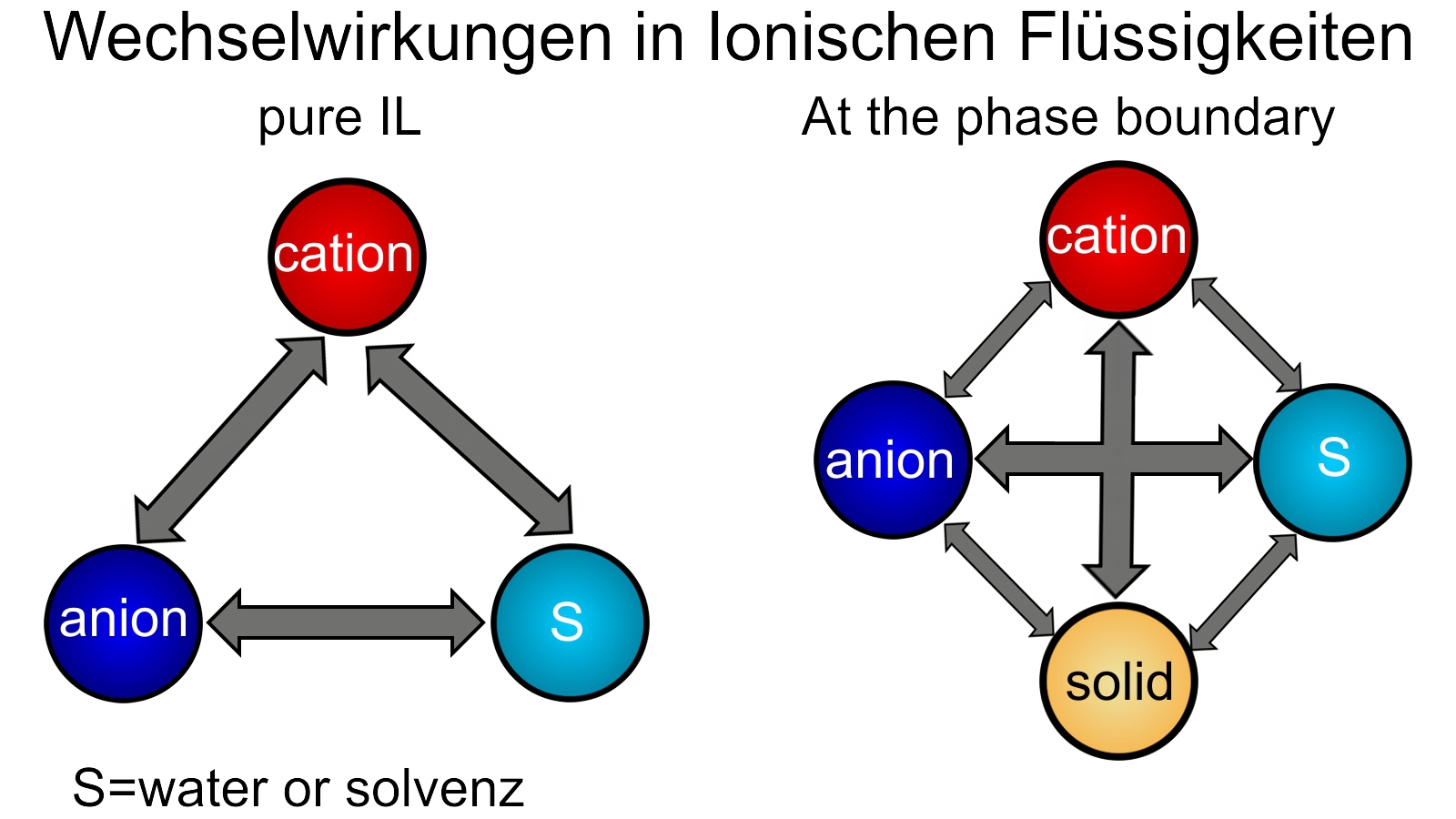Ionic Liquids
(member of the DFG Priority program SPP1191 - Ionic Liquids 2006-2012)
The development of novel imidazolium, phosphonium, and sulfonium ionic liquids (IL) - silanolate
systems using the chemical reaction of corresponding stable carbenes, carboxylates or ylides
with suitable silica precursors is a new concept in the chemistry of ionic liquids.

The research objective closes the gap between solid supported IL due to physisorption and
chemisorbed cations. The use of different oligomeric silicatic structures originating from
oligosiloxanes, silsesquioxanes and silica nano-particles with a large surface atom/volume
atom ratio is part of the scientific program to show the effect of the molecular surface structure on
the properties of the IL system. The influence of the cation structure of alkyl substituted imidazolium,
phosphonium and sulfonium salts is another point of interest.

Selected publications on this topic:
New aspects on Polarity of ionic liquids as measured by solvatochromic Probes.
A. Oehlke, K. Hofmann, S. Spange, New J. Chem. 2006, 30, 533–536.
A hydrogen bond accepting (HBA) scale for anions, including room temperature ionic liquids.
R. Lungwitz, S. Spange, New J. Chem. 2008, 32, 392–394.
Synthesis of chemisorbed imidazolium and phosphonium cations by reaction of ionic liquid precursors with silica.
R. Lungwitz, Th. Linder, J. Sundermeyer, I. Tkatchenko, S. Spange, Chem. Commun. 2010, 46, 5903–5905.
The dipolarity/polarisability of 1-alkyl-3-methylimidazolium ionic liquids as function of anion structure and the alkyl chain length.
R. Lungwitz, V. Strehmel, S. Spange, New J. Chem. 2010, 34, 1135–1140.

